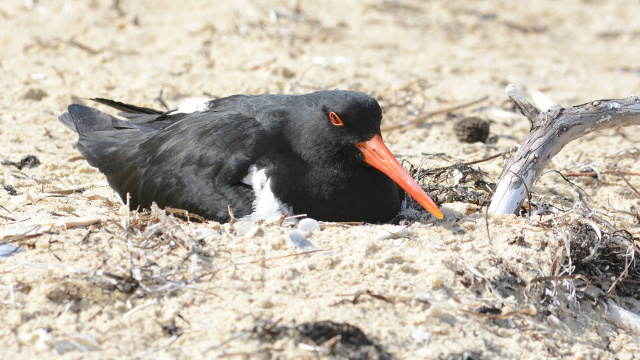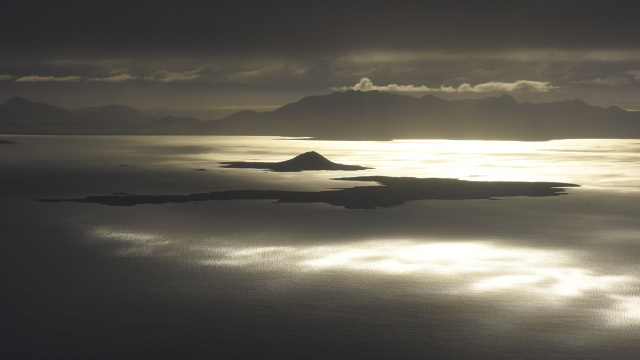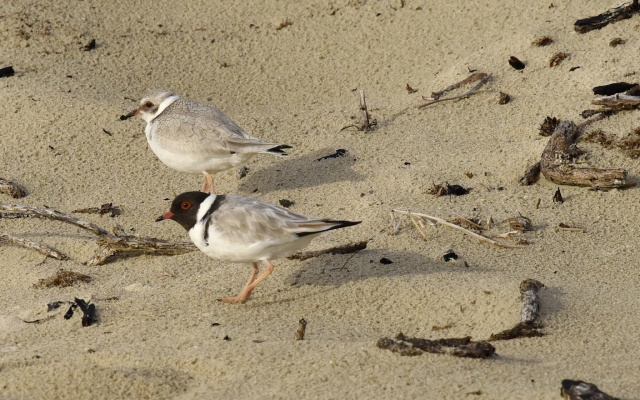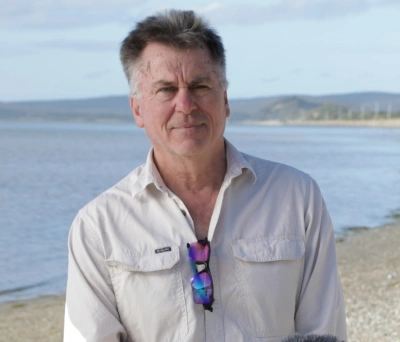The great Tasmanian bird count

It was 1992. Previously there were no accurate representations of population sizes. We knew Tasmania had hooded plovers on sandy beaches, pied oyster catchers, but we didn’t know how many compared to mainland states.
We had organised a few around-the-state counts in earlier years, but different people were doing different areas and the effort wasn’t consistent. There were troubles putting together data sets from different people at different times and all the rest of it.
We realised we would have to do it in a coordinated manner, on an ongoing basis.

We thought it would probably take about five years to get around most of the beaches. We knew we were never going to get around every single beach in Tasmania, because we have a very long coastline and there are lots of little nooks and crannies with little beaches that support birds.
So we thought we’d try to work at a high level, try to get to as many beaches as we could around Tasmania, and also the Furneaux Group and King Island.
The idea was if we could cover 75 – 80% of the coastline, we’d have a sense of what the numbers were looking like on those beaches, and we could defend our estimates based on a robust data set.

We thought five years to get around – a bit of piggybacking here and there, stop here, get dropped off somewhere else, walk through, get picked up and walk the next beach and so on.
The project has continued a little bit longer than five years! This year just gone was year 31 of a five-year project. I’ve now walked 450 beaches. I’ve walked probably in the order of three quarters of Tasmania’s coastline from Strahan all the way around to South East Cape, King Island, Flinders and truwana/Cape Barren. I’ve been to lungtalanana/Clark Island.
Getting on to some of the smaller islands now in the Furneaux Group is the next big challenge. There are 103 islands in the Furneaux Group and most of them have got sandy beaches on them.
I’ve got to about 10 or 12 of them already, but that’s the next big challenge.
We have a remarkable data set for our beach nesting birds around Tasmania. That data set is now published and we know from the work that has been done compared to the mainland that Tasmania has two thirds if not more of the global population of the eastern hooded plover.

The little hooded plover that you see running around almost like clockwork toys on beaches, two thirds of the global population is here in Tasmania. Probably half of the global population of the pied oyster catcher is here in Tasmania.
We’re losing these birds on the mainland because of increased human activities on beaches. We don’t have the same intensity of spectrum or activities on beaches that we see on the mainland. So Tasmania is becoming every year increasingly more important as a refuge for these species.


Dr Eric Woehler

It was 1992. Previously there were no accurate representations of population sizes. We knew Tasmania had hooded plovers on sandy beaches, pied oyster catchers, but we didn’t know how many compared to mainland states.
We had organised a few around-the-state counts in earlier years, but different people were doing different areas and the effort wasn’t consistent. There were troubles putting together data sets from different people at different times and all the rest of it.
We realised we would have to do it in a coordinated manner, on an ongoing basis.

We thought it would probably take about five years to get around most of the beaches. We knew we were never going to get around every single beach in Tasmania, because we have a very long coastline and there are lots of little nooks and crannies with little beaches that support birds.
So we thought we’d try to work at a high level, try to get to as many beaches as we could around Tasmania, and also the Furneaux Group and King Island.
The idea was if we could cover 75 – 80% of the coastline, we’d have a sense of what the numbers were looking like on those beaches, and we could defend our estimates based on a robust data set.

We thought five years to get around – a bit of piggybacking here and there, stop here, get dropped off somewhere else, walk through, get picked up and walk the next beach and so on.
The project has continued a little bit longer than five years! This year just gone was year 31 of a five-year project. I’ve now walked 450 beaches. I’ve walked probably in the order of three quarters of Tasmania’s coastline from Strahan all the way around to South East Cape, King Island, Flinders and truwana/Cape Barren. I’ve been to lungtalanana/Clark Island.
Getting on to some of the smaller islands now in the Furneaux Group is the next big challenge. There are 103 islands in the Furneaux Group and most of them have got sandy beaches on them.
I’ve got to about 10 or 12 of them already, but that’s the next big challenge.
We have a remarkable data set for our beach nesting birds around Tasmania. That data set is now published and we know from the work that has been done compared to the mainland that Tasmania has two thirds if not more of the global population of the eastern hooded plover.

The little hooded plover that you see running around almost like clockwork toys on beaches, two thirds of the global population is here in Tasmania. Probably half of the global population of the pied oyster catcher is here in Tasmania.
We’re losing these birds on the mainland because of increased human activities on beaches. We don’t have the same intensity of spectrum or activities on beaches that we see on the mainland. So Tasmania is becoming every year increasingly more important as a refuge for these species.

You might like...

A lifelong love for wildlife

Macquarie Island: a true wildlife hotspot

The amazing migration
The fairy tern: tiny beach nester
The fairy tern is a similar size to a hooded plover - so tiny, it would sit comfortably in the palm of your hand. They lay just two eggs, onto the beach sand. See these remarkable images from Tasmanian-based bird ecologist Dr Eric Woehler.
Newsletter
Sign up to keep in touch with articles, updates, events or news from Kuno, your platform for nature
